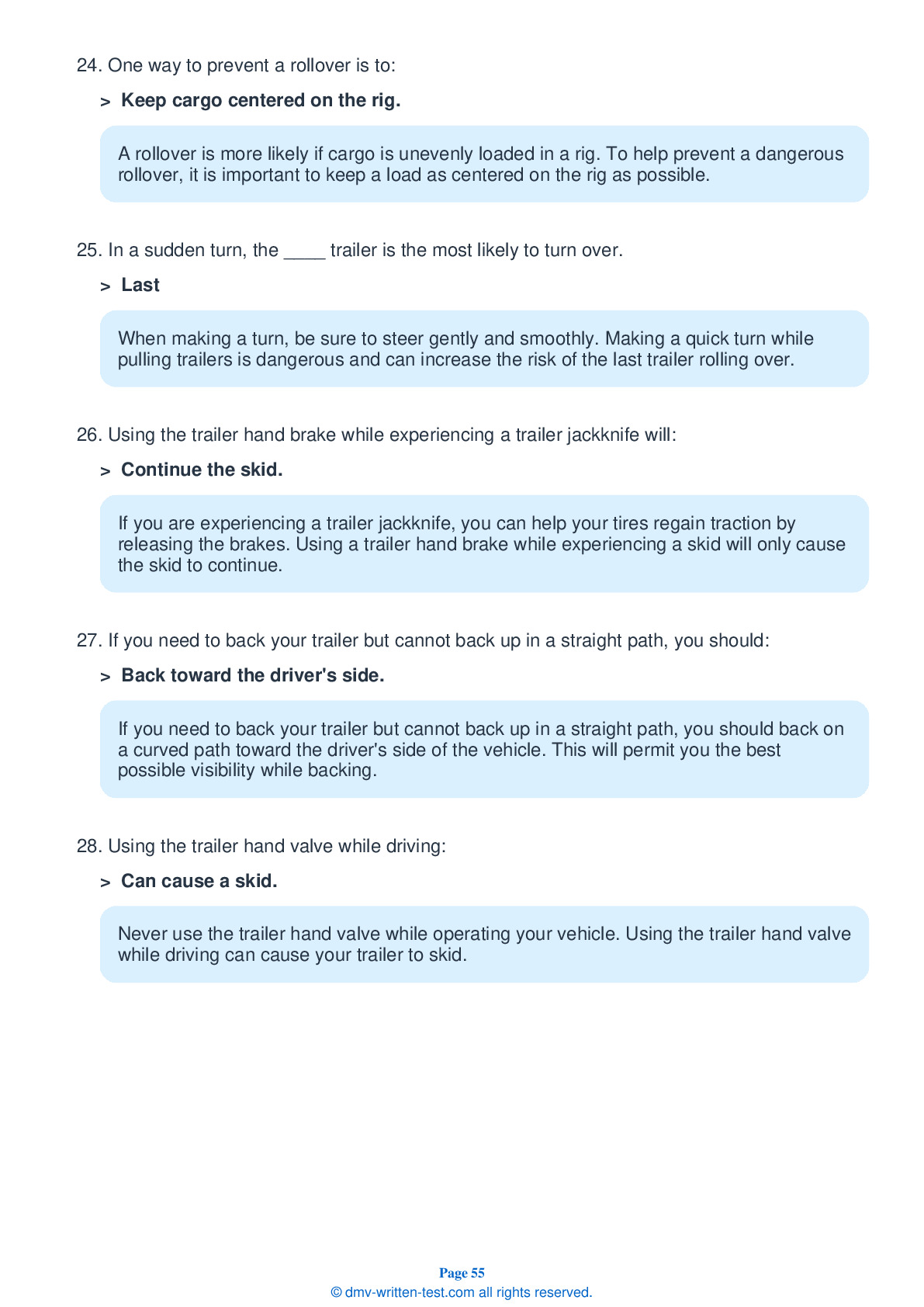Combination
All applicants who are applying for a Class A CDL should be prepared to take the Combination test. This test covers information found in Section 6 of the Commercial Driver License Manual. Section 6 provides the information needed to safely operate tractor-trailers, doubles, triples, and straight trucks with trailers. The test is made up of 20 multiple-choice questions, and applicants will need to correctly answer a minimum of 16 questions to pass. The Combination test is not a replacement for the Double/Triple endorsement test.
Number of Question
Passing Score
1. Shut-off valves:
Explanation
Shut-off valves are used in air supply lines to control the passage of air from one trailer to another. The rear shut-off valve should always be closed to prevent air from leaving the braking system.
2. Fully-loaded rigs:
Explanation
Fully-loaded rigs are more vulnerable to rolling over than empty rigs because the weight of the cargo gives the vehicles higher centers of gravity.
3. The trailer hand valve should not be used while you are driving because:
Explanation
Never use the trailer hand valve while operating your vehicle. Using the trailer hand valve while driving can cause your trailer to skid.
4. Older trailers are not equipped with spring brakes. This means that if the air supply for a vehicle's air braking system leaks away:
Explanation
Older trailers do not have spring brakes. This means that if the air supply in an older trailer's air tank has leaked away, there will be no working brakes connected to the trailer and its wheels will turn freely.
5. If a load is placed on one side of a trailer, the trailer:
Explanation
Positioning the weight of a load on one side of a trailer may cause the trailer to lean to that side, increasing the risk of a rollover during turns and lane changes.
6. If you are backing and become unsure about your path of travel, you should:
Explanation
If you are unsure of your path while you are driving in reverse, you should stop, exit the vehicle, and recheck your path of travel.
7. Rollovers happen when:
Explanation




